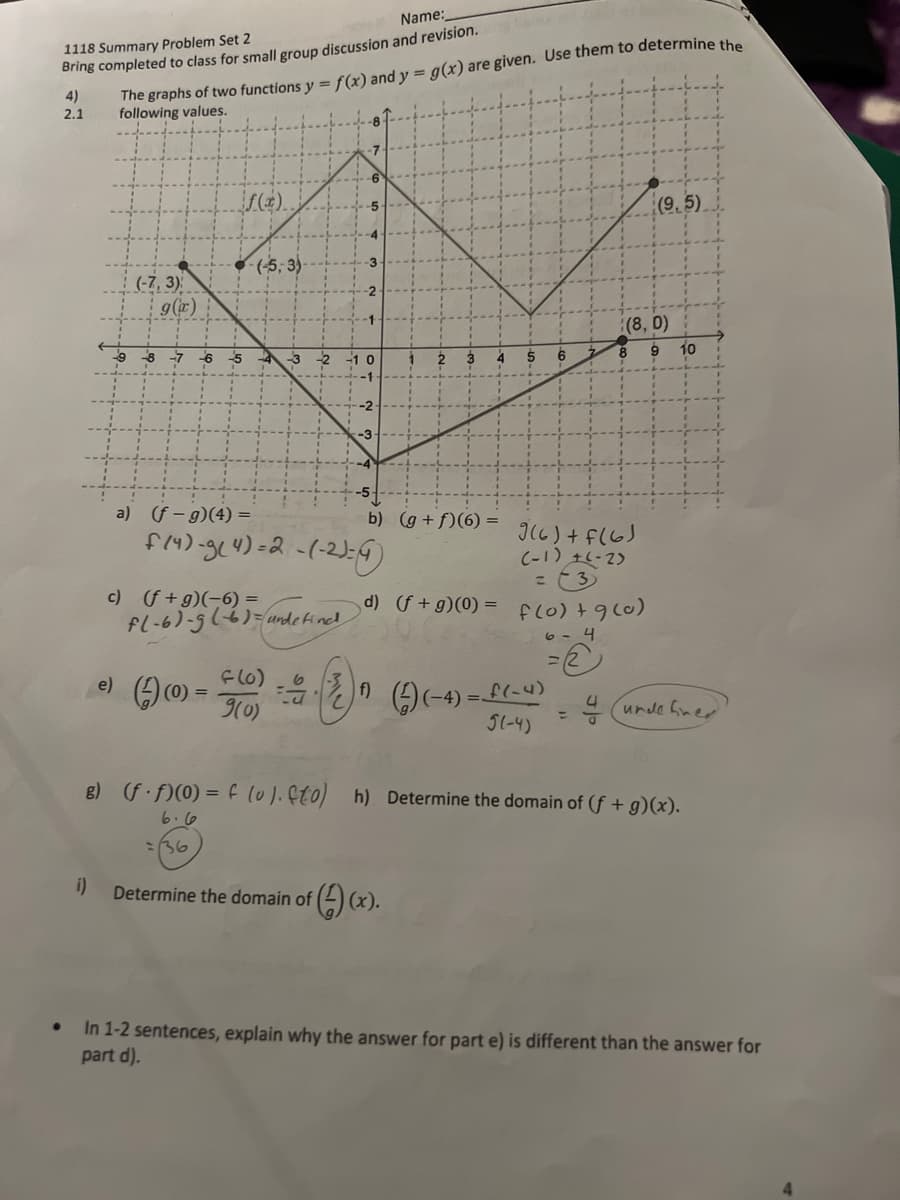Algebra & Trigonometry with Analytic Geometry
13th Edition
ISBN:9781133382119
Author:Swokowski
Publisher:Swokowski
Chapter3: Functions And Graphs
Section: Chapter Questions
Problem 3DE
Related questions
Question
I need help with h, I and the last part please

Transcribed Image Text:Name:
The graphs of two functions y = f(x) and y = g(x) are given. Use them to determine the
following values.
1118 Summary Problem Set 2
Bring completed to class for small group discussion and revision.
4)
2.1
(4).
(9,5)
(5, 3)
-3
(-7, 3)
g(x)
-2
(8, 0)
10
-8
-7
-6
a) (f-g)(4) =
b) (g +f)(6) =
Il6) + f(6J
C-1) +6-2)
c) (f+g)(-6) =
d) f +g)(0) = fc0) +9(0)
undefind
e)
(0) =
9(0)
%3D
4
unde fner
51-4)
8) (f )(0) = f l0).Ç0)
h) Determine the domain of (f + g)(x).
6.6
:36
i)
Determine the domain of () (x).
In 1-2 sentences, explain why the answer for part e) is different than the answer for
part d).
Expert Solution
Step 1
Solution is attached below.
Step by step
Solved in 2 steps with 1 images

Recommended textbooks for you

Algebra & Trigonometry with Analytic Geometry
Algebra
ISBN:
9781133382119
Author:
Swokowski
Publisher:
Cengage

Algebra & Trigonometry with Analytic Geometry
Algebra
ISBN:
9781133382119
Author:
Swokowski
Publisher:
Cengage